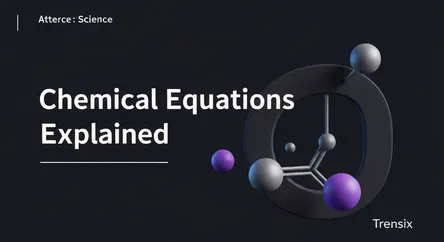Science
Chemical Equations Explained

Learn the fundamentals of chemical equations, the symbolic language chemists use to describe reactions and predict material transformations.
What is it?
A chemical equation is the symbolic representation of a chemical reaction. It uses chemical formulas to show the reactants (starting substances) on the left side and the products (substances formed) on the right side. An arrow points from reactants to products to indicate the reaction's direction. Numbers called coefficients are placed before the formulas to indicate the ratio of molecules involved, ensuring the equation is "balanced." Symbols in parentheses, like (s) for solid, (l) for liquid, and (g) for gas, are often used to show the physical state of each substance.
Why is it trending?
Chemical equations are a timeless and fundamental concept in science education. Their importance lies in upholding the Law of Conservation of Mass, which states that matter is not created or destroyed in a reaction. Balancing equations is a critical skill that ensures the number of atoms for each element is the same on both sides. This principle is the foundation of stoichiometry, the branch of chemistry that calculates the quantities of reactants and products, allowing scientists to predict the outcomes of reactions accurately.
How does it affect people?
Chemical equations describe countless processes that affect daily life, from cooking food to the combustion that powers vehicles. They are crucial in many industries, including pharmaceuticals for developing new medicines, energy production for optimizing fuel use, and agriculture. For students and scientists, understanding chemical equations is essential for predicting how substances will interact. This knowledge allows for the creation of new materials, the solving of environmental problems, and advancing our understanding of the world at a molecular level.